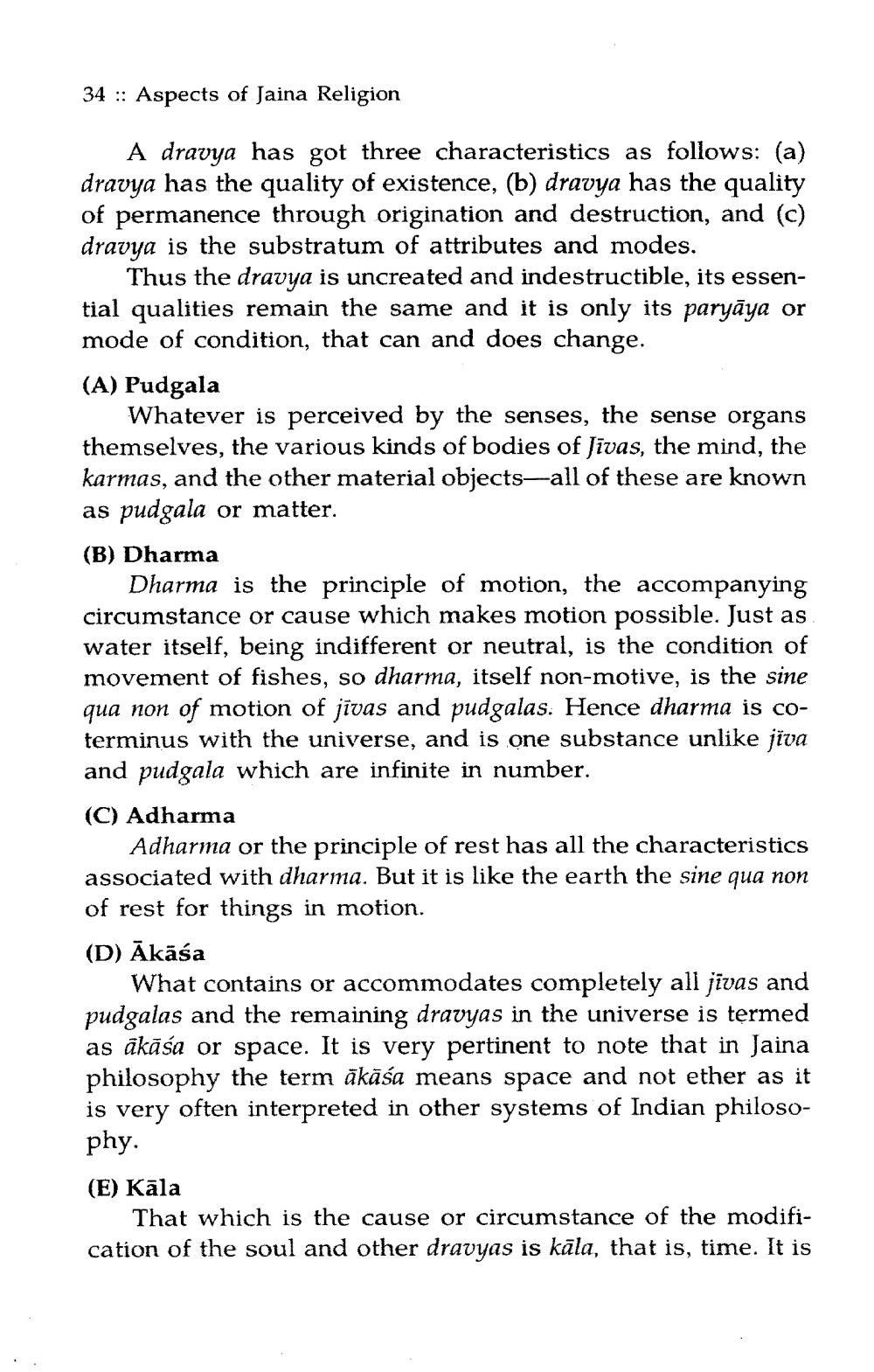________________
34 :: Aspects of Jaina Religion
A dravya has got three characteristics as follows: (a) dravya has the quality of existence, (b) dravya has the quality of permanence through origination and destruction, and (c) dravya is the substratum of attributes and modes.
Thus the dravya is uncreated and indestructible, its essential qualities remain the same and it is only its paryāya or mode of condition, that can and does change. (A) Pudgala
Whatever is perceived by the senses, the sense organs themselves, the various kinds of bodies of Jīvas, the mind, the karmas, and the other material objects—all of these are known as pudgala or matter. (B) Dharma
Dharma is the principle of motion, the accompanying circumstance or cause which makes motion possible. Just as water itself, being indifferent or neutral, is the condition of movement of fishes, so dharma, itself non-motive, is the sine qua non of motion of jīvas and pudgalas. Hence dharma is coterminus with the universe, and is one substance unlike jiva and pudgala which are infinite in number. (C) Adharma
Adharma or the principle of rest has all the characteristics associated with dharma. But it is like the earth the sine qua non of rest for things in motion. (D) Ākāśa
What contains or accommodates completely all jīvas and pudgalas and the remaining dravyas in the universe is termed as ākāśa or space. It is very pertinent to note that in Jaina philosophy the term ākāśa means space and not ether as it is very often interpreted in other systems of Indian philosophy. (E) Kāla
That which is the cause or circumstance of the modification of the soul and other dravyas is kāla, that is, time. It is




